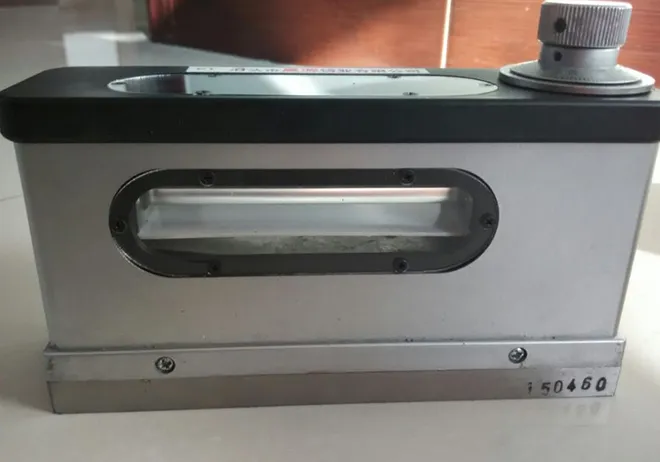Nov . 08, 2024 20:44 Back to list
one way check valve
Understanding One-Way Check Valves Design, Function, and Applications
One-way check valves, often referred to simply as check valves, are essential components in various piping systems, serving a fundamental role in ensuring that fluids flow in a single, predetermined direction. This article aims to provide a comprehensive overview of one-way check valves, discussing their design, functioning principles, applications, and advantages.
What Is a One-Way Check Valve?
A one-way check valve is a mechanical device that allows fluid (liquid or gas) to flow through it in only one direction while preventing backflow. This property helps maintain the efficiency of systems, ensuring that the flow does not reverse and cause damage or inefficiency in processes.
Design and Construction
One-way check valves can be constructed from various materials, including metals, plastics, and elastomers, making them suitable for different applications and environments. Common types of one-way check valves include swing check valves, lift check valves, and diaphragm check valves, each designed to accommodate specific flow conditions and installation requirements.
1. Swing Check Valves These valves use a hinged disc that swings open when fluid flows in the intended direction. When there is no flow or if the flow reverses, the disc swings back, sealing the valve. Swing check valves are particularly effective for applications with high flow rates and low-pressure drops.
2. Lift Check Valves These devices feature a vertically moving disc that lifts to allow flow in the forward direction and drops down to prevent backflow. Lift check valves are suitable for high-pressure applications and can handle variations in flow rates.
3. Diaphragm Check Valves Utilized mainly in sanitary applications (like food and pharmaceutical industries), diaphragm check valves have a flexible diaphragm that opens and closes based on pressure differentials. These valves maintain a hygienic environment by avoiding stagnation and contamination.
Working Principle
one way check valve

The functioning of a one-way check valve is based on pressure differentials between the upstream and downstream sides. When the fluid's pressure on the inlet side exceeds that on the outlet side, the valve opens, allowing the fluid to flow through. Conversely, when the pressure on the outlet side is greater, the valve closes, preventing backflow.
This design is crucial in various systems where backflow could lead to contamination, equipment failure, or system inefficiencies, such as in water treatment plants, sewage systems, and chemical processing.
Applications
One-way check valves are widely used across multiple industries, including
- Water and Wastewater Management They are critical in pumping stations and sewer lines to prevent backflow that could lead to contamination or system overload. - Oil and Gas These valves help prevent backflow in pipelines transporting crude oil and natural gas, minimizing risks of leaks and system failures. - HVAC Systems In heating, ventilation, and air conditioning systems, check valves ensure proper flow direction, preventing unwanted reversals that could disrupt climate control efficiency. - Automotive Applications Check valves are essential components in fuel systems, ensuring that fuel flows correctly from the tank to the engine and preventing backflow that could cause issues with performance and safety.
Advantages
The implementation of one-way check valves in various systems offers numerous benefits, including
- Preventing Backflow The primary function of a check valve is to prevent reverse flow, protecting equipment and ensuring operation efficiency. - Easy Installation Most check valves are designed for straightforward installation within existing piping systems, making them user-friendly. - Durability Check valves are built to withstand significant pressure differentials and harsh environments, providing reliable long-term performance. - Maintenance-Free Many types of check valves operate without any required maintenance, allowing them to perform effectively without constant oversight.
Conclusion
One-way check valves are vital components in numerous industries, ensuring the safety and efficiency of fluid handling systems. With various designs catering to different applications, these valves play a crucial role in preventing backflow and protecting operational integrity. In an ever-evolving industrial landscape, the continued use and innovation surrounding one-way check valves will remain critical for fluid management solutions. Understanding their function and applications is essential for anyone involved in the design or maintenance of fluid systems.
-
Y Type Strainer Maintains System Efficiency Long TermNewsJul.15,2025
-
Valve Selection Guide for Industrial ApplicationsNewsJul.15,2025
-
Steel Fab Table Provides Durable Work Surface for WeldingNewsJul.15,2025
-
Pad Iron Provides Stable Support for Heavy MachineryNewsJul.15,2025
-
One Inch Check Valve Fits Standard Plumbing SystemsNewsJul.15,2025
-
Measuring Micrometer Ensures Precise Dimensional AccuracyNewsJul.15,2025
Related PRODUCTS









